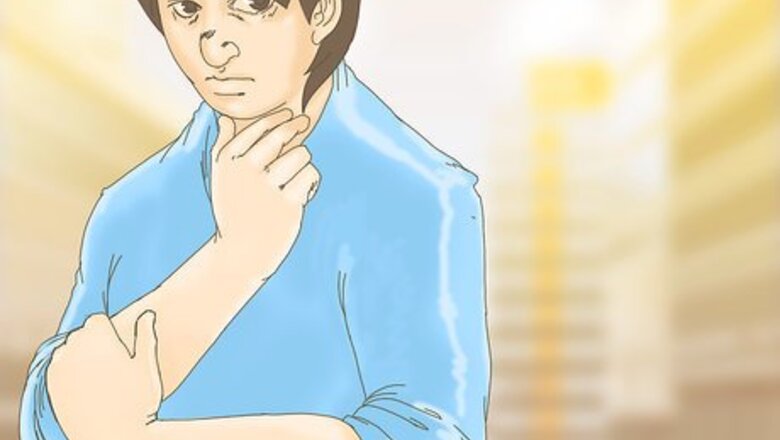
views
Considering Your Options

Consider hiring a lawyer. You can have a traffic ticket attorney represent you in court. You can certainly represent yourself. However, there are many situations where you might want legal help. Consider the following: Do you have the time to prepare a defense? You can’t go into court and “wing it.” Instead, you will need to request documents and take the time to read them. Are you comfortable talking in public? To be persuasive, you need to be somewhat comfortable making an argument in front of a judge and asking a police officer questions. If you dread talking in public, then you might want a lawyer. Is your case complicated? You might not understand the regulation you violated. If so, you should consult with an attorney.

Find a lawyer. If you think you want legal help, then you need to find a qualified attorney. To find a lawyer, you should visit the Washington Bar Association, which has helpful information. In particular, they have links to the following: Your county bar association, where you can find private attorneys to hire. Information on qualifying for reduced fee legal help. Pro bono representation, where a lawyer works for free. Other helpful legal information.
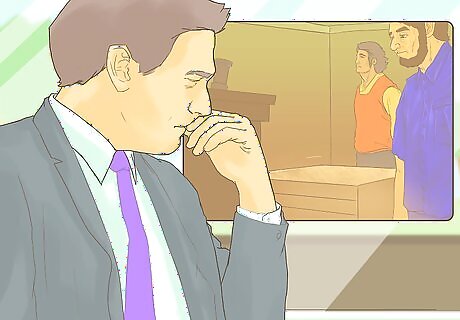
Think about requesting a deferral. Although you want to fight your traffic ticket, you should also consider the option of asking for a “deferral.” In this situation, you admit to being “guilty” but the court defers actually finding you guilty for one year. If, after a year, you don’t have any more traffic citations, then the court will dismiss the ticket. However, if you get another citation in that year, the judge does not dismiss the ticket and you are found guilty. You can only get a deferral once every seven years. You may not get a deferral if you hold a commercial driver’s license, even if you were ticketed while driving your personal vehicle. If you want a deferral, then you must request it before your contested hearing. It is not automatic. Instead, the judge has discretion in certain situations, which may differ by the court you appear in. You can talk to your attorney if you have questions.
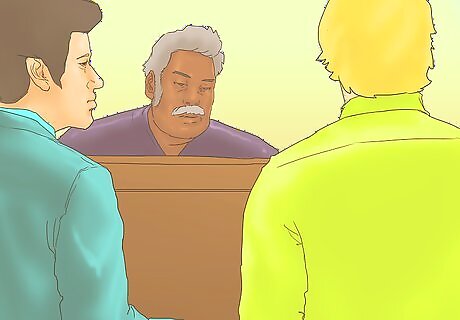
Consider mitigation as an option. With mitigation, you essentially plead guilty but give the judge an excuse for why you committed the violation. The judge then has the power to lower the amount of your fine. If you want to mitigate, then contact the court clerk and ask how to request it. Mitigation is still a conviction, and it will go on your driving record. However, you can request a deferral as part of mitigation.
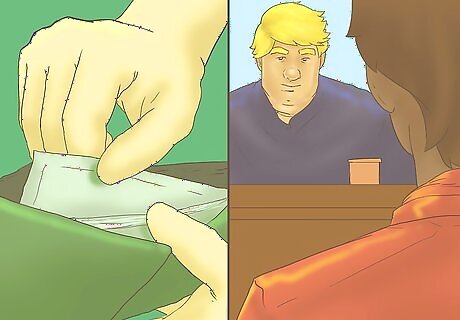
Request a contested hearing. After receiving a ticket, you have three options. You can pay a fine, request mitigation, or request a contested hearing. If you want to fight the ticket, then select a contested hearing. You have to check “contested hearing” on the ticket and then return it to the court within 15 calendar days. If you’re late, your license can be suspended. Be sure to keep a copy of both sides of your ticket for your records.
Building Your Defense

Identify the violation. You need to understand exactly what you were charged with. For example, you might have been charged with speeding. Alternately, the officer might claim you didn’t have certain functional lights working on the vehicle. Once you identify the charge, you should look up the violation online. Find out what elements the prosecutor needs to prove at a contested hearing. Remember, if the prosecutor fails to prove one required element, then you can win.
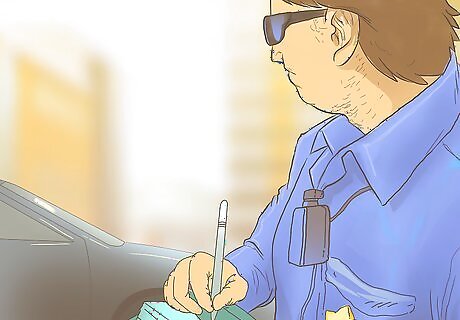
Check whether the officer signed the ticket. If the officer didn’t sign your ticket, then the ticket can’t be introduced at your trial. Take out your ticket and check to see if it was signed.
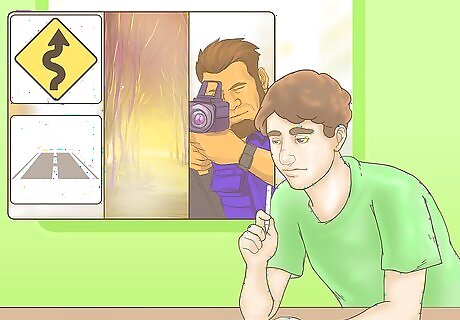
Write down your own memories. As soon as possible, you should sit down and write out your memories of what happened when you were stopped. In particular, note the following: Were there other cars on the road along with you? If so, then radar or laser technology might have picked up a different car’s speed. Was the weather overcast? If so, the officer might not have been able to see well. Was your speed measured on a flat, straight portion of the road? Generally, radar works best when the road is straight. If you were clocked on an incline or on a winding road, then you can raise these factors.
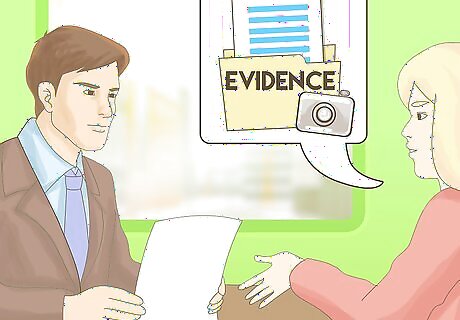
Ask for discovery. You can request a copy of all documents the prosecutor wants to introduce at trial. You should file a letter with the court clerk and serve a copy on the prosecuting attorney. You must request discovery at least 14 days before the hearing. You will be sent the following information: the citing officer’s sworn statement video or photographic evidence which the prosecutor intends to introduce names of witnesses not identified in the officer’s sworn statement
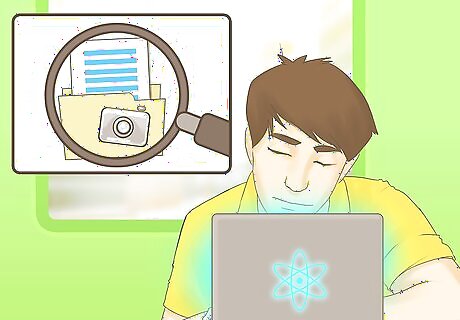
Analyze the discovery. You should go through each document you receive and analyze it. Look for ways the evidence helps you prove you aren’t guilty of the traffic offense. For example, look for the following: Was the report filed with the court? Under Washington law, the officer must file the citation within five days of issuing the ticket. If not, then you can get the case dismissed. Did the officer identify your car as the only one targeted by the radar? If not, then you can claim the officer took a speed reading of a different vehicle. Did the officer calibrate the radar gun with the tuning forks? Read the officer’s sworn statement. Did the officer state that he or she was qualified to operate the radar or laser device? This should be in the sworn statement. If not, then you can challenge the speed reading. When did the officer check whether the radar or laser was working properly? Did they check the device after stopping you?
Preparing for Your Contested Hearing
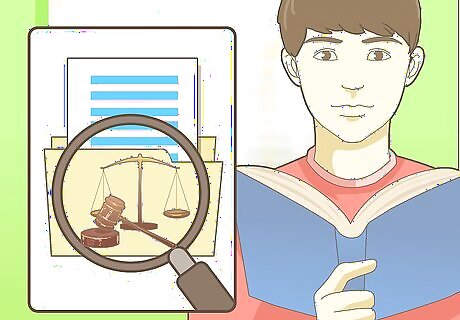
Read the court rules. Washington state’s traffic court rules are available online. You should download them and read a copy. There may also be local court rules, which you must follow. You should check with your court clerk or look on the court’s website.
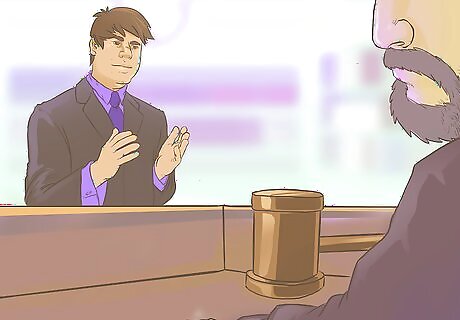
Study the Washington rules of evidence. If you are representing yourself without an attorney, then you need to learn the state’s rules of evidence as best as you can. You can find them online. With a few exceptions, the court will follow these rules. In particular, learn what “hearsay” is. Hearsay is an out-of-court statement offered for the truth of what the statement says. For example, a witness might get on the stand and testify that her father told her that you were speeding. This out-of-court statement (“I saw the defendant speeding”) is offered in court to prove you were speeding. If hearsay is offered at trial, you need to stand up and say, “Objection, Your Honor. Hearsay.”

Attend a pre-hearing conference. In some courts, you might have to attend a pre-hearing conference. At the conference, the judge might offer you deferral. The judge might also ask you if you want to go to mitigation instead of a contested hearing. At the conference, you may have to fill out some paperwork, which will differ by court. You will be given the option of waiving your appearance at the conference in writing. You must make sure the court receives the waiver before the day of the pre-hearing conference. Contact the court clerk and ask if there is a waiver form you must fill out. Some courts have particular forms, and you should always use the court’s form if one is available.
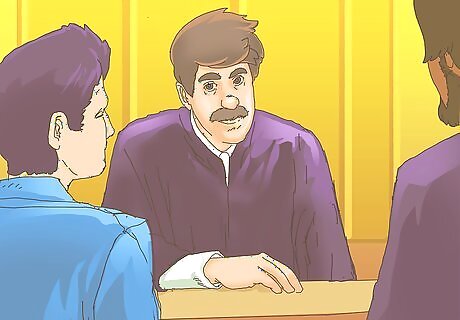
Receive notice of your contested hearing date. If you attend the prehearing conference, then the judge should tell you the date of your contested hearing. If you waived the prehearing conference, then you will receive notice of your contested hearing date in the mail. You should receive the hearing date within 21 days of requesting a contested hearing.

Serve subpoenas on your witnesses. A subpoena is a legal request to show up at court on a certain day and time in order to deliver testimony. You should identify witnesses who you want to testify on your behalf and send them a subpoena. You may also request that the citing officer show up to court by sending a subpoena. Generally, in Washington, an officer does not need to show up at your contested hearing unless you subpoena him or her. You can ask the court clerk to issue the subpoenas. Remember to issue the subpoena at least seven days before the contested hearing.
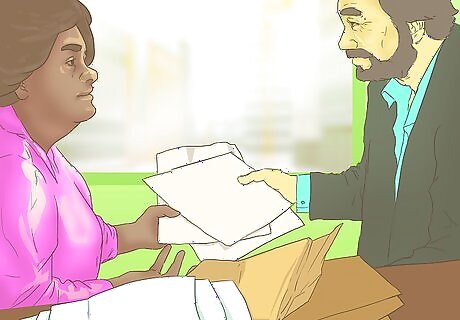
Object if your contested hearing is not scheduled soon enough. According to Washington law, you must be sent written notice of your contested hearing date within 21 days. The hearing must also be scheduled at least 14 days from the date notice was sent and also be within 90 days of the pre-hearing conference (when one is scheduled) or 120 days of the infraction (if there was no pre-hearing conference). If you didn’t receive notice within these dates, you need to file a “Motion for a Speedy Trial” with the court. You also must serve a copy of your motion on the prosecutor. Your notice setting the contested hearing date may explain how you can go about doing this. If not, then call the court clerk or meet with a lawyer. You must file and serve this motion within 10 days of receiving the notice of your contested hearing date.
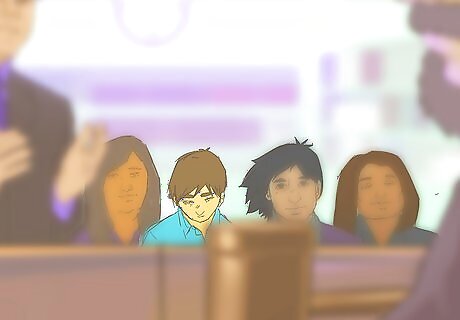
Observe a contested hearing. The best preparation is to sit in on a contested hearing before your own. You can call the court clerk and ask when “contested infractions” are being held. Sit in the back with a notepad and pay attention to how the proceedings go.
Defending Yourself in Court

Dress appropriately. You want to look good for your contested hearing. Wearing neat, clean clothes will signal to the judge that you are a serious person. In no circumstances should you wear shorts, flip flops, ball caps, tank tops, crop tops, see-through clothing, or jeans (unless jeans are your only long pants). Men can dress “business casual.” Wear dress pants and a long-sleeved button up shirt. You can also wear a conservative tie if you have one. For footwear, wear dress shoes with dark socks. Women can wear dress slacks with a nice blouse or sweater. Women can also wear a dress or a skirt, but they must not be too short or tight. Wear flats or shoes with a low heel, but not open-toed sandals.
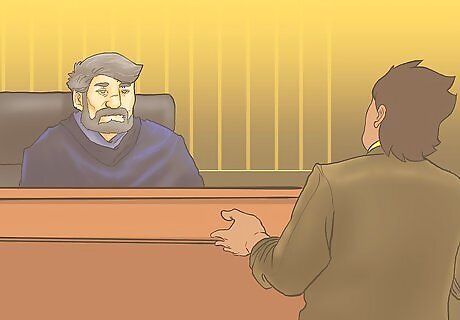
Make a pre-trial motion. Before the contested hearing begins, you should bring to the judge’s attention anything that warrants having the case dismissed or evidence suppressed. This is called a “pre-trial” motion. For example, you can raise the following: The ticket wasn’t filed in time. The ticket must have been filed with the court within five days of the date of the infraction (excluding weekends and holidays). If it was filed too late, ask the judge to dismiss the case. Ask the judge to suppress the sworn statement if you didn’t receive it at least seven days before the contested hearing. At the same time, ask for dismissal for lack of evidence. You will have to show that you were prejudiced. For example, you learned about a new witness in the officer’s sworn statement but you haven’t had time to talk to the witness. Request that the evidence be suppressed if you never received it, and also move for dismissal for lack of evidence. Here, you don’t need to make any showing of prejudice. Request dismissal based on your “Speedy Trial Motion.” Explain to the judge how the hearing does not comply with the timing requirements of Washington law.
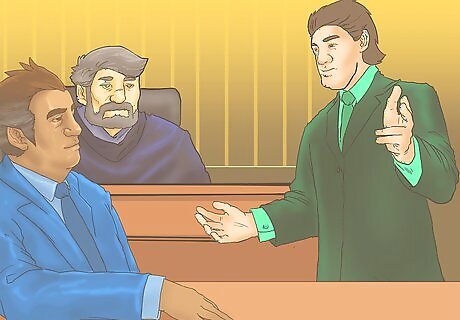
Cross-examine the prosecutor’s witnesses. Hearings differ around the state. In some courtrooms, there might not be a prosecutor. However, if there is one, then he or she should go first. The prosecutor will introduce the officer’s sworn statement into evidence. If the officer didn’t sign the statement, object to the judge. If you subpoenaed the officer, then the prosecutor should question the officer first. If the officer didn’t show up despite the subpoena, then you should ask the judge to dismiss the case. You also can cross-examine the police officer. See Question Witnesses when Representing Yourself for more information.

Present your own evidence. You also can have witnesses testify. For example, a person riding with you might testify that you weren’t speeding. You will also probably have to testify. Remember the following tips: Listen closely to the question and try to answer only the question. Don’t provide information that hasn’t been asked. Speak loudly so everyone can hear you. Stay calm. Don’t get into an argument with the prosecutor. This can make you look less believable. Tell the truth. You are testifying under oath. Also, truth is your best defense. When you tell the truth, it is hard for the prosecutor to trip you up.
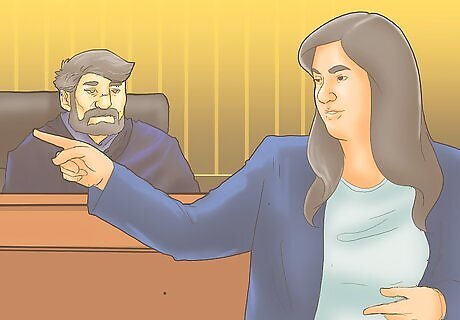
Make a closing argument. In your closing argument, you need to sum up all of the evidence you think shows you didn’t commit the infraction. Try to draft a list of bullet points. You won’t get a lot of time to talk and should try to summarize the evidence in under 20 sentences. For example, you could say, “Your Honor, the evidence doesn’t show that I was driving 60 miles per hour in a 45 mile per hour zone. Instead, the evidence shows that Officer Pinkerton didn’t know whether or not he actually measured my speed. For example, Mrs. Smith testified that the traffic was heavy. If you recall, she was riding in the car with me, and she said that several larger vehicles were passing us at the time Officer Pinkerton said he clocked me going 60. Also, Officer Pinkerton himself admitted that he didn’t check to see if the radar gun was working properly either before or after stopping me.”
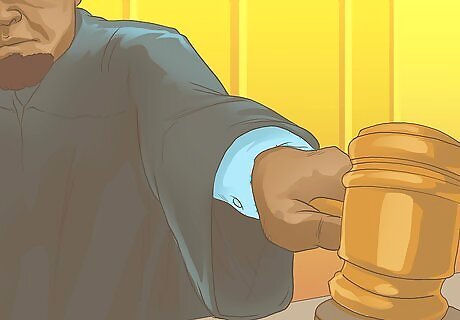
Receive the verdict. To be convicted of the driving offense, the state must prove by a “preponderance of the evidence” that you committed the offense. This is less than “beyond a reasonable doubt.” Instead, the prosecutor must show it is “more likely than not” that you committed the offense. If you win, the judge will issue an order dismissing the case. If you lose, the judge will impose a fine on you.

File an appeal, if necessary. As the defendant, you may appeal any judgment against you. You can appeal to a superior court. Contact the court clerk with questions about how to appeal.




















Comments
0 comment